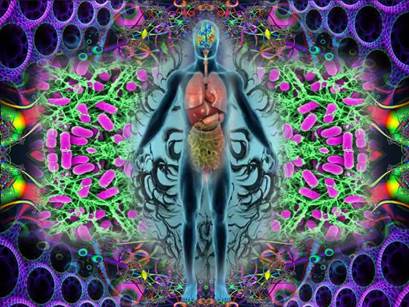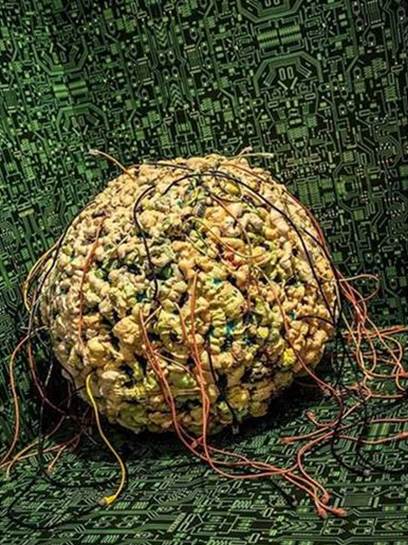
|

|
| Mehmet Candas |
|
|
|
|
Science
and technology have always been my primary interests.
While my work concentrates on practical and
theoretical issues concerning biology, I am also interested in
exploring living
things through art, philosophy and aesthetics.
I find conceptual work that demands
cross-disciplinary thinking to
understand relationships in nature highly stimulating and mentally
rewarding.
Imaginative and intuitive approaches often are complementary and
sometimes
integral to the definitive aspects of science. Science enables us to
explain
nature and life. It helps us to make sense of the universe surrounding
us.
Philosophy gives meaning, and art gives value to our existence. I get inspired by looking at the diverged
shapes and forms of organisms. They all have comparable efficiencies in
their
own settings. I am sensitive to their harmonious connections and
intricacies in
ecological coexistences. I think biological properties found in nature
are
evolutionarily-tested. Desirable
features are the product of a complex and powerful system that has an
intrinsic
plasticity and mutability, which is mesmerizing. My fascination and
inspirations often prompts me to find symbiotic relationships between
biology
and creative design. From an artistic perspective, I enjoy
experimenting with
generative and emergent concepts that are fundamental to the complexity
of
biological systems. I explore these concepts to create visual forms
that can
intrigue our senses and imagination.
I also
realize the importance of art and science across disciplines. Both are
naturally connected to our lives. Together, they not only help raising
awareness to many issues that concern us, but also help us deal with
the
seriousness of such issues by lessening fear and increasing resilience
and
adaptation. Furthermore, scientific and technological advances often
track
artistic ideas. So, I advocate that science should be an obvious part
of our
culture, like art, literature and music, providing a source of
enjoyment,
excitement, and hope. I believe art and science enhance our
consciousness.
Understanding the harmony in nature and deciphering the inner-workings
of
biological systems holds the key for finding solutions to grand
challenges we
face.
|
---------------------------------------
O
----------------------------------------
SYMBIOTIC
UNCONSCIOUS

Symbiotic
Unconscious is a digital animated collage created to entertain the
concepts
involving the relationship between the human body and gut microbiota
and how
the complex nature of gut ecosystem influences physiology and brain
activity. It emphasizes the fundamental
notion that
life on Earth originated as prokaryotic cells. These single cell
microorganisms
evolved with amazing diversity and dominated the biosphere billions of
years
before the first eukaryotic cells descended through cooperative union
of some
prokaryotic cells. Arrival of eukaryotic
cells ushered in a whole new era for life on Earth; it gave rise to
multicellular life forms, including animals and plants on the
evolutionary
scene. Long history of coexistence of microorganisms with animals and
plants
shaped symbiotic relationships with ecological and environmental
significance.
These evolutionary associations formed metaorganisms consisting of
multicellular hosts and communities of microorganisms associated with
them.
Like all animals, we humans are colonized by microbial communities,
which
collectively are called microbiota. Vast majority of these resident
microbes
reside within our gastrointestinal tract, or gut. The gut microbiome -
the
composition of gut microbiota along with their genes and metabolic
products -
has enormous impact on our physiology, both in health and disease
states. The
effects of gut microbiome on our body involve diet and environmental
variables
as well as hereditary factors. Gut
microbiome also influences our behavioral responses through
bidirectional
communication between central nervous system and enteric nervous
system, which
is recognized as the brain-gut axis. Disturbed microbiota, or
dysbiosis, alters
the brain-gut interactions. Such
alterations are linked to inflammatory pathology, gastrointestinal
diseases and
metabolic disorders as well as neurodegenerative and psychiatric
neurological
conditions. These findings now prompt us to reevaluate many concepts in
medicine and brain sciences. Translating how symbiotic interactions
involving
gut microbiome act as an unconscious system and influence human body
and mind
certainly will play an important role in advancing knowledge on health,
disease, brain functioning and social interaction.
Symbiotic
Unconscious is presented as part of "Gut Instinct: Art, Design, and the
Microbiome" - a virtual exhibition hosted at SciArt Center.
|
----------------------------------------
O
----------------------------------------
|
ULTIMATE INTERFACE

Ultimate
Interface is an anecdotal depiction of the intersection of biology and
technology. It is an imaginative
expression exploring the
analogies and metaphors used for biological cells’ and
computers’ information
processing powers within the context of singularity and biocentrism.
Just as
biological cells are the basic unit of life, computers are the basic
unit of
the digital world. Remarkably, flow and
processing of data in computers have similarities to how biological
cells read
environmental cues and generate appropriate responses.
Cells receive signals from their surroundings
and process information using integrated networks of chemically
reacting
molecules within their boundaries. Computers
perform operations on data and process
information using
integrated circuitries.
It is
predicted that advances in algorithmic information processing will
eventually
bring unification of computing technology with the biological ability
to
communicate information to and from living systems (singularity). This intersection purportedly will yield to
an integrated process and spread in the universe with maximum level of
complexity and consciousness (the Omega point). However,
life and biology remain central to being
and reality, and
create the universe (biocentrism).
“Future
comes from past. The past is realization
of evolutionary moments in the endless journey of cosmic perpetuation. Is there a philosophical meaning and a final
destination for us in this journey? Perhaps,
progression of our intelligent existence
and transformative
impact of technology is our destiny. Permeation
and unification of our conscious
existence with technology
may be extraordinary. Believing in this
unification might be the answer we seek for the meaning of our
existence and
final destiny. Nevertheless, the
universe may indeed be biocentric and perhaps such unification has
already
happened. After all, future comes from
the past and the past is realization of evolutionary moments in an
endless
journey of cosmic perpetuation.”
The "Ultimate
Interface" installation (30'' X 30' cell on 8' X 5' background) was
presented at Dallas Fashion+Art Show in June 2014.
|
----------------------------------------
O ----------------------------------------
|
REPEAT...BUT NOT THE
SAME
The work
addresses one of the startlingly basic qualities in evolution,
“repetition”. The idea is
based on how
we see the prevalence of repetition in nature. It underscores that
repeated
themes in nature are integrated in different context with variations.
Indeed,
one of the defining characteristics of evolution is that replicating
organisms
are repeated with variations, which are selected according to their
fitness and
can be correlated with ecological factors. In order not to complicate
the
visual appeal, variations are represented only with colors.
|
----------------------------------------
O ----------------------------------------
|
|
© 2014 |
Mehmet Candas | Biological
Sciences | The University of Texas at Dallas
|
|